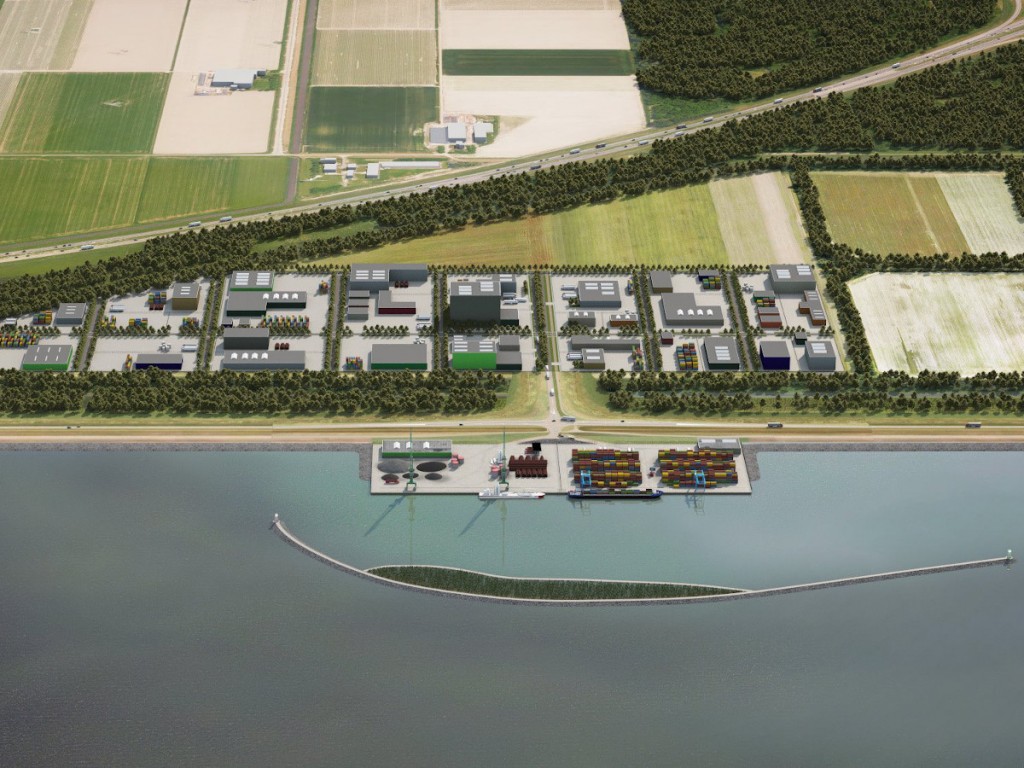Flevokust Haven, the Netherlands’ newest port, is a mere speck of land compared to its enormous counterparts in Amsterdam and Rotterdam. However, this inland port on the country’s largest lake is as aggressively pursuing renewable energy-related business as are the bigger ports.
“We are dependent on the windmill industry,” said Rogier Wilms, Flevokust’s program manager.
Other developers are also interested, according to Wilms. “We have more demand than we can provide,” he said.
Flevokust opened for business just one year back with a private container terminal on half the port’s initial five hectares’ area. The Flevoland provincial authorities constructed the port on land reclaimed from the IJsselmeer. This large fresh water lake is actually an inland bay, cut off from the North Sea by a dyke constructed almost a century back. The new port offers a 400 meters’ quayside.

Flevokust is about 37 miles from Amsterdam port. It’s the last link in a series of inland ports built to support the country’s extensive transport and logistics system. It’s also just down the road from the Lelystad Airport, which is being expanded to serve as a “twin” to Schiphol Airport, if it can overcome local opposition.
Concurrent with the port, the government is also developing a 160 hectares’ industrial area. This includes a 30-hectares solar park.
When planning the port, provincial officials had windmills in mind. The area around Flevokust in Flevoland province now hosts upwards of 800 onshore wind turbines. That has created an aesthetic concern.
“There are so many windmills. It’s basically disturbing the landscape,” Wilms said. And as the industry has developed, the turbines have grown larger and larger. The region wants to take advantage of that. “We want less windmills, but bigger ones,” Wilms said.
This transition will take maybe seven years, with many more after to maintain the turbines, he said.
At the same time, offshore wind generation is coming to IJsselmeer, with three wind parks on the drawing board. And, Wilms added, Flevokust could become a staging port for wind parks in the North Sea itself if and when existing locks linking IJsselmeer to the ocean are strengthened and expanded, a project now in its beginning stages. This will allow short-sea vessels to dock at the port.
Road access to the port is a critical aspect of the design, Wilms said, since wind turbine components must be transported overland. The port developers made sure the heavy transport trucks could carry the blades without removing poles or traffic signs. The province’s relatively straight roads help.




